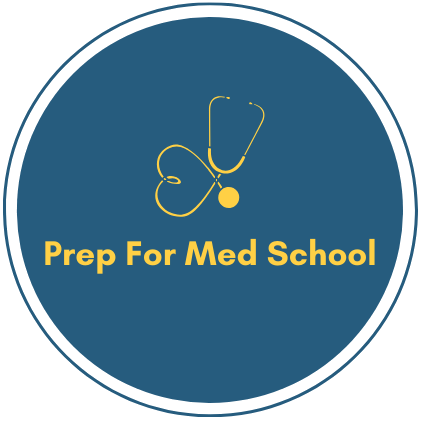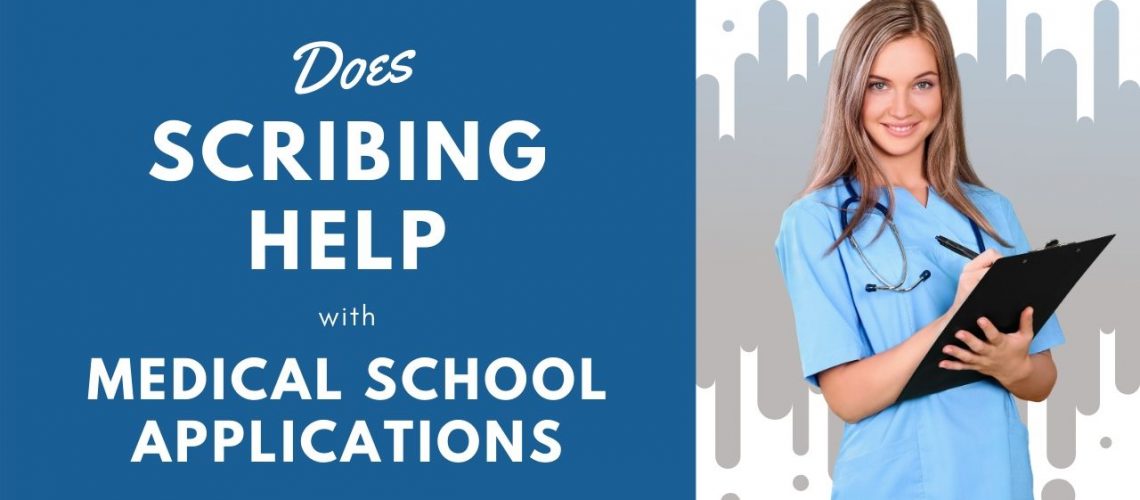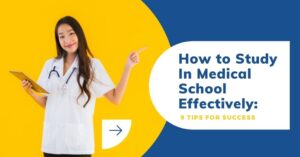First of all, it’s amazing that you are choosing to pursue medicine as your calling! Applying to medical school is just the beginning of your odyssey. Unfortunately, there’s just one downside. You will be competing with over 70,000 students who have stellar academic backgrounds as you do. So there’s pressure to stand out.
Table of Contents
If you’re reading this, you’re probably wondering: how can you bolster your application? In that case, scribing may be an option. Medical scribing offers important insight into the medical field, shows the admissions committee your dedication, and gives you opportunities to figure out if getting into medicine is what you really want.
What is a Medical Scribe?
Nowadays, doctors have on average 15 minutes to spend with each patient. The more patients doctors see, the more the clerical work piles up. It’s a crazy workload that physicians already lack time for. This is where the medical scribe steps in.
More than just documentation assistants, medical scribes are considered a “productivity partner” because they help improve the efficiency of medical care teams. They reduce the distraction of electronic medical records so that physicians can focus on the patients. This way, medical scribes help empower other healthcare workers, which has become increasingly important as burnout rates climb.
And the data doesn’t lie! For instance, a study showed that medical scribes have improved providers’ experiences by reducing their paperwork burden by 50%.
It’s important to note that a medical scribe is not the same as a medical transcriptionist. Whereas a medical transcriptionist is someone who types down what a physician says or what she or he hears from a recording, a medical scribe works more closely with healthcare providers.
According to Bailey Schwochert, a former medical scribe recruiter at Elite Medical Scribes (now known as ScribeAmerica), medical scribes create and maintain patient records, document patient history and interview, and keep track of labs and radiology orders. As a doctor’s assistant, medical scribes allow doctors to step away from the computer, promoting more patient interaction and improving the patient experience as a whole.
The exact responsibilities of a medical scribe and the level of autonomy scribes have may vary from site to site, but the goal remains the same: to help physicians provide better care overall.
A Brief Overview of Becoming a Medical Scribe
Typically, medical scribes are pre-medical or pre-PA college students, but anybody considering a career change to medicine can also scribe to gain clinical exposure while getting paid.
Medical scribes work a variety of schedules depending on the physician’s needs. Depending on the clinical setting you choose, schedules may be a typical nine to five, or an arrangement of morning, afternoon, evening, midnight, or overnight shifts—all depending on the scriber’s availability.
Moreover, where scribes work depends on their preferences and open shift availability. This may range from the ER or orthopedic, to hand and foot, to other specialties. Given the flexibility in scheduling, students may even scribe during the school year.
Depending on the scribing program, training generally involves a couple of scheduled calls with a trainer followed by a series of progressive onsite training sessions.
A medical scribe learns to work with whatever specific electronic medical system is used at a particular hospital or site. The hardest part, Schwochert mentions, may be the steep learning curve while on the job and keeping up with physicians. But in the long run, it’s an enriching experience that provides ample opportunities for exploration and learning.
Is Scribing Good for Medical School Applications?
Now let’s dive right into the meat of it: is scribing good for your medical school application?
The short answer is: yes. Scribing gives you hands-on experience and informative insight into the diagnosis process and the different ways different providers work.
Scribing can be used to supplement and strengthen multiple sections of your application. The AMCAS application has nine sections in total, three of which can be bolstered by your experiences as a scribe and the relationships you build with medical providers.
A good scribe, according to Schwochert, is someone who is passionate about medicine and enjoys shadowing and working in the clinical setting.
The qualities that make a good scribe–attentive, confident, able to handle stressful situations–are all the qualities required in a good physician. So scribing is good training and experience that you can relay to admission committees. It shows that you understand what being a doctor requires, and also helps you figure out if a career in medicine is for you.
Work Experience and Extracurricular Activities
One section of the AMCAS application asks for 15 work experiences and extracurricular activities. In this section, you can include paid work experiences, medical or non-medical volunteer experiences, shadowing, extracurricular activities, leadership roles, awards, honors, publications, or other activities near and dear to your heart.
But it is also the section where you show that you have clinical exposure. Gaining clinical experience prior to applying is one of the crucial ways to buff up your application and be competitive. Scribing gives you just that.
Medical scribing may even lead to additional valuable experience in advanced scribe positions in some scribing programs. These may include, for instance, becoming a chief medical scribe, or an implementation specialist. As a chief medical scribe, you train and manage onboarding scribes. As an implementation specialist, you fly to sites around the nation (on the company’s dime) to set up scribing programs at different institutions.
Opportunities like these allow you to showcase exemplary leadership and management skills on top of medical exposure experience, which you can also add to your application.
By working as a medical scribe, you are already shadowing physicians. However, scribing allows you to develop relationships with doctors, opening doors to further shadowing opportunities like those in the operating room.
This brings us to an important part of work experiences and extracurricular activities: shadowing. Unlike some other professional schools, medical schools put neither a hard minimum nor a cap on the number of shadowing hours needed. However, each school’s specific recommended number is usually an implied requirement.
The upside? Schools like University of Washington even encourage shadowing a diverse range of providers over time to gain a different insight into what you like and what you don’t like.
Letters of Evaluation
Remember that the credentials of the person who pens your letters don’t carry as much weight as what the letters say about you. It is far more important that these letters explain why and how you are qualified for admission into medical school and the medical field.
Your medical application is all about you, so make sure these letters add weight in supporting your character.
One of the secrets to getting a fantastic letter of recommendation is by having someone familiar with who you are and the work you do write it.
Medical scribes work closely with medical providers, allowing the perfect opportunity for them to speak about your diligence, your work ethic, and most importantly your commitment. That is to say, a vivid letter of recommendation with concrete details can make you stand out as an applicant.
Personal Statement
The personal statement is the gut of your application. It provides an opportunity for you to expand on how your life experiences and extracurricular activities shaped your desire to pursue medicine.
Admissions committees expect you to answer “why medicine?” But it’s important to not only say why, but also “tell [them] why you did that, what you learned, how that experience has affected you, and how it will affect the way you intend to practice medicine in the future,” according to the director of the office of diversity and community partnership at the Feinberg School of Medicine at Northwestern University.
With the numerous hours spent at the clinic observing doctors and participating in patient care, scribing supplies you with ample examples to show and tell “why medicine.”
How Scribing is a Great Source of Experience for Interviews
Bonus section: your scribing experience can help you beyond your application. After your application goes through preliminary rounds, your next step is interviews. Here is your chance to show the admission committee who you are beyond what they see on paper. Showcase your passion for medicine–that’s where scribing helps immensely.
For Judah Gray, now a first-year medical student at SUNY Downstate, scribing gave him lots of interesting anecdotes to tell. Gray took a gap year and scribed at two hospitals in New York City under ScribeAmerica. Also, he notes that the “scribing experience gives you great experience in talking to strangers.” Gray also adds that “a huge part of this job is talking to patients and providers so I felt more familiar with navigating the conversation, and you learn to talk like a medical professional which gives you options for talking to another medical professional.” As a scribe, you have a deeper understanding of what providers do and go through, as well as an expanded medical vocabulary.
In essence, scribing provides you with tangible examples to illustrate your passion for medicine and teaches you to be comfortable with speaking with medical professionals. After all, they’re the ones who will most likely be interviewing you.
Conclusion
By now, we hope we’ve hammered in the important ways scribing helps elevate your application. To reiterate, scribing helps you:
- Gain insight into the medical field through hands-on experience
- Develop good relationships with providers for strong recommendation letters and shadowing opportunities
Yes, it’s important to have great numbers, but simply being academic superstars isn’t enough for applying to medical school. Medical school applicants also have to demonstrate a high level of achievement and passion outside of school. More importantly, their nonacademic activities should support their passion for medicine. That can range from research to volunteer missions to medical scribing.
Through scribing, you can easily check off shadowing, clinical exposure, and leadership skills from your medical school application. On top of that, this role allows you to receive endorsing letters of recommendation and many stories for your personal statement and interviews.
Medical scribing can quantitatively and qualitatively benefit your application to medical school in many ways, which is why it’s becoming an increasingly popular option for students.
Let us know what you think or if you have any interesting anecdotes in the comments below! What has your experience with scribing been like? Share this piece with your friends and anyone else who is interested in scribing!






